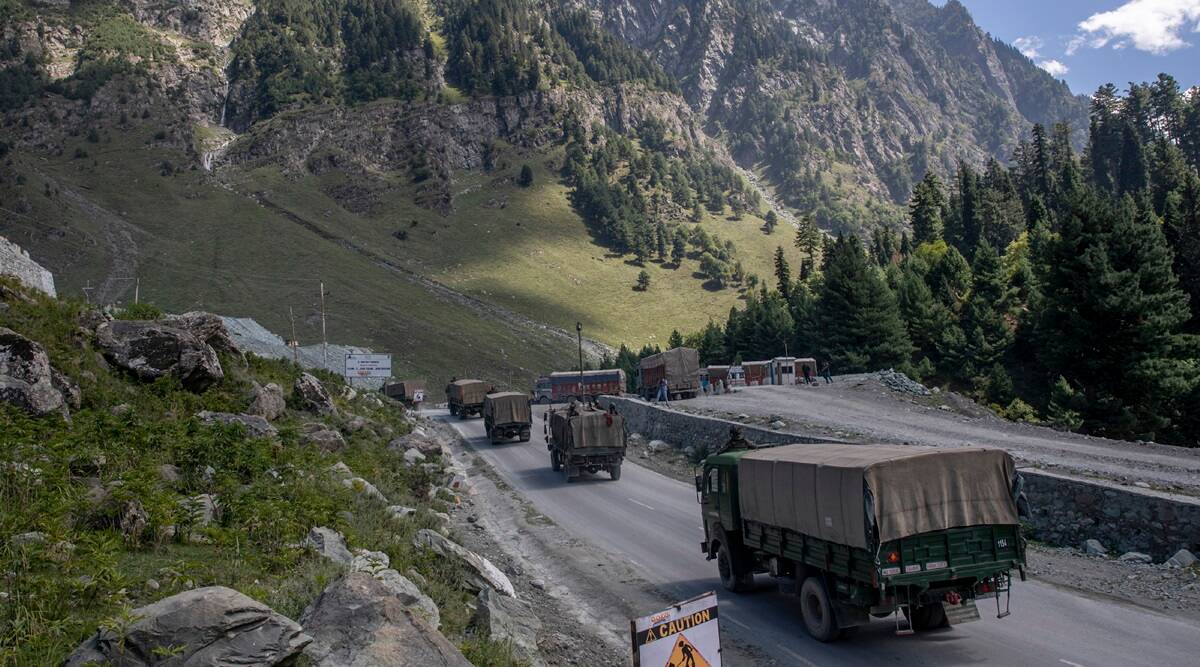
SOURCE: ENS
There is a dangerous parallel in history to the current India-China conflict in Ladakh. The violence in the Galwan river valley in June 2020, and the ongoing military confrontation in the Himalayas over the past six months, bears striking resemblance to a watershed moment in world history known as the Seven Years War.
It is, therefore, important to examine the larger implications of this Sino-Indian rivalry on the polarity and distribution of power in the international system.
Experts have argued that China’s aggression in the Himalayas is an attempt to dissuade India from getting into an alliance with the United States. However, upon closer examination, the exact opposite is revealed. China’s attempt seems to be to drive New Delhi into Washington’s arms, use it as a precursor to consolidate a Sino-Russian alliance, and divide the world in two camps — a bipolar structure with the United States and China as the leaders competing for global hegemony. China’s strategy to strike a fatal blow to a multipolar world, is straight out of the playbook of the Seven Years War, between Britain and France.
During the mid-18th century, the boundary between French and British colonial possessions in the present-day United States were not demarcated on a mutually agreed map, much like the Line of Actual Control (LAC) between China and India in the Himalayas. In 1753, Britain opposed infrastructure developments – a series of forts in the Ohio river valley — to check the assertive anti-status quo policy by the French.
Peaceful attempts by the British failed to restore status quo ante and led to a skirmish in which 10 French soldiers, including the commanding officer were killed. The French revenge on the British forces came shortly thereafter. Eventually, the first President of the United States, George Washington, who led the British army as a Lieutenant Colonel in that skirmish, surrendered to the French forces at the Ohio river valley. Diplomatic attempts to resolve the crisis could hardly reach a meaningful compromise, once blood had been shed.
The Ladakh conflict has followed a similar script so far. New Delhi’s peaceful efforts to halt Beijing from erecting structures on the disputed areas of the LAC were unsuccessful in the summer of 2020. Following this, India objected to the presence of Chinese structures on June 15, leading to a violent clash and the death of 20 Indian soldiers on the Galwan river valley, in addition to an unknown number of Chinese casualties. This was the first instance of blood being shed on the India-China border in over four decades. In retaliation, the use of special frontier force comprising Tibetan exiles by India, to capture strategic heights, along the LAC at Pangong Tso, is a leaf out of Britain’s strategy of working with local American Indians against aggressive French designs.
Two rounds of diplomacy at very high levels, between the defence and foreign ministers of India and China had limited success in reducing tensions, just as diplomatic efforts between Britain and France were not very successful. Although Beijing may have a stronger army than New Delhi, Indian Navy has operational advantages, and a history of being a maritime power, unlike the Chinese navy. These realities are reminiscent of the British-French military balance of powerin the mid-18th century – while France had a superior army, British navy had access to key maritime chokepoints.
The Ohio river valley conflict eventually snowballed into the Seven Years War between Britain and France, leading to a rush for colonisation and global hegemony. The most significant development during this conflict was the British-Prussian alliance formation, followed by the Franco-Austrian alliance. Interestingly, this development came to be known as the “diplomatic revolution”, because it involved Britain and France, interchanging their erstwhile allies. It is along these lines, that if China’s aggression in the Himalayas provokes India to enter into an alliance with the United States, China can then use it an excuse for full-fledged military alliance with Russia, thereby splitting the Indo-Russian strategic partnership.
What lessons can India and China draw from the Anglo-French Seven Years War? Although Britain ended up being the victor, the Seven Years War took a huge toll on its economic and military resources. For France, the military campaigns only resulted in minor tactical victories. The jostling for power ended multipolarity and established a bipolar order of British-Prussian alliance against Franco-Austrian alliance. Therefore, pushing the current Ladakh crisis to its logical conclusion may end with an Indo-US military alliance followed by a Sino-Russian alliance.
Beijing is acutely aware that a war with China may well be the final nail in the coffin for India’s conception of strategic autonomy. Therefore, pushing India to the brink of war, is a well-thought-out strategy by China. Irrespective of the outcome, a war in itself may drive India towards a military alliance with the United States, allowing China to turn Russia against India, effectively breaking the Indo-Russian strategic partnership. Consequently, the Indo-US alliance and a Sino-Russian alliance, will end New Delhi’s vision of multipolarity and establish a transient bipolar world order. This is China’s endgame in the current Himalayan conflict with India.






